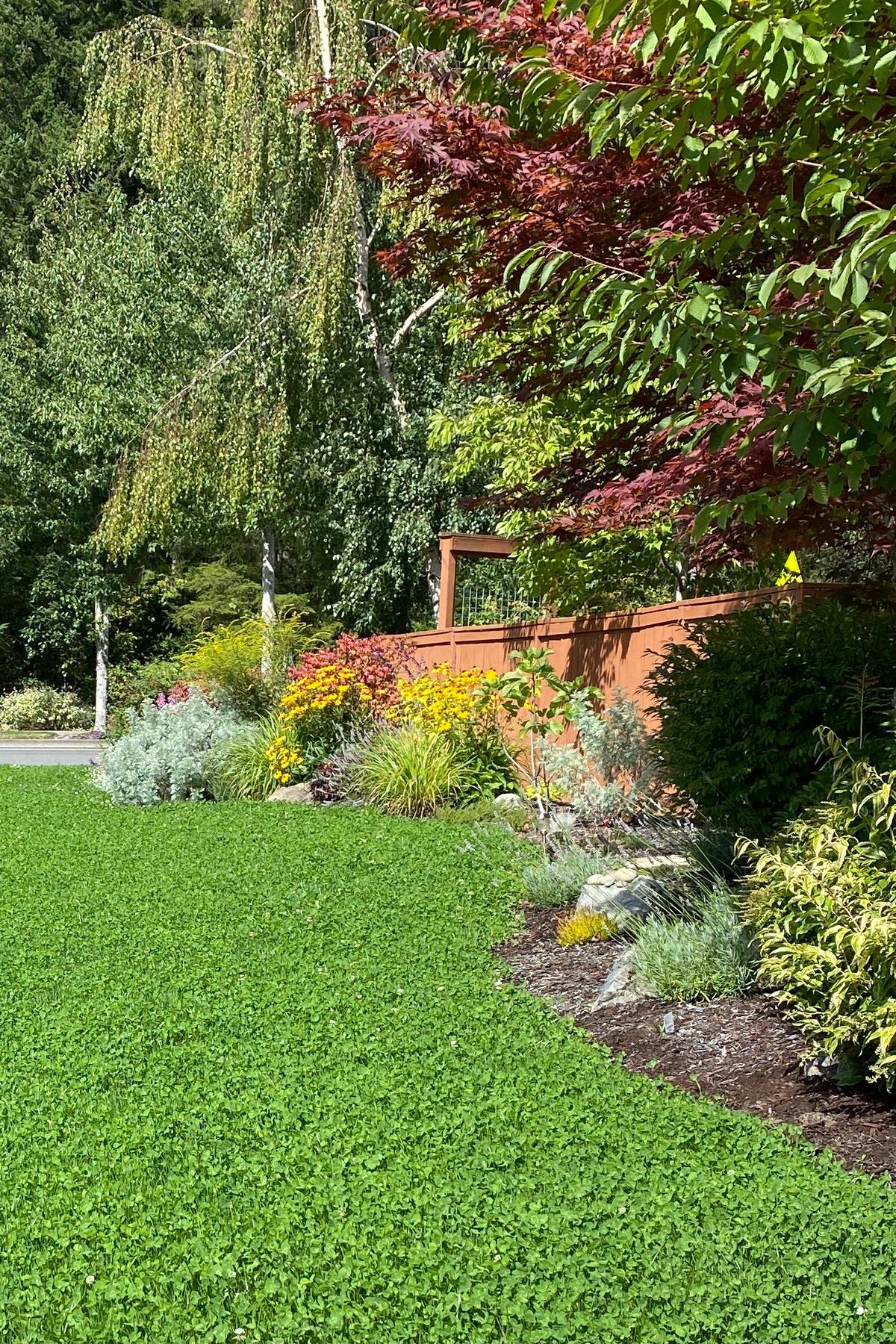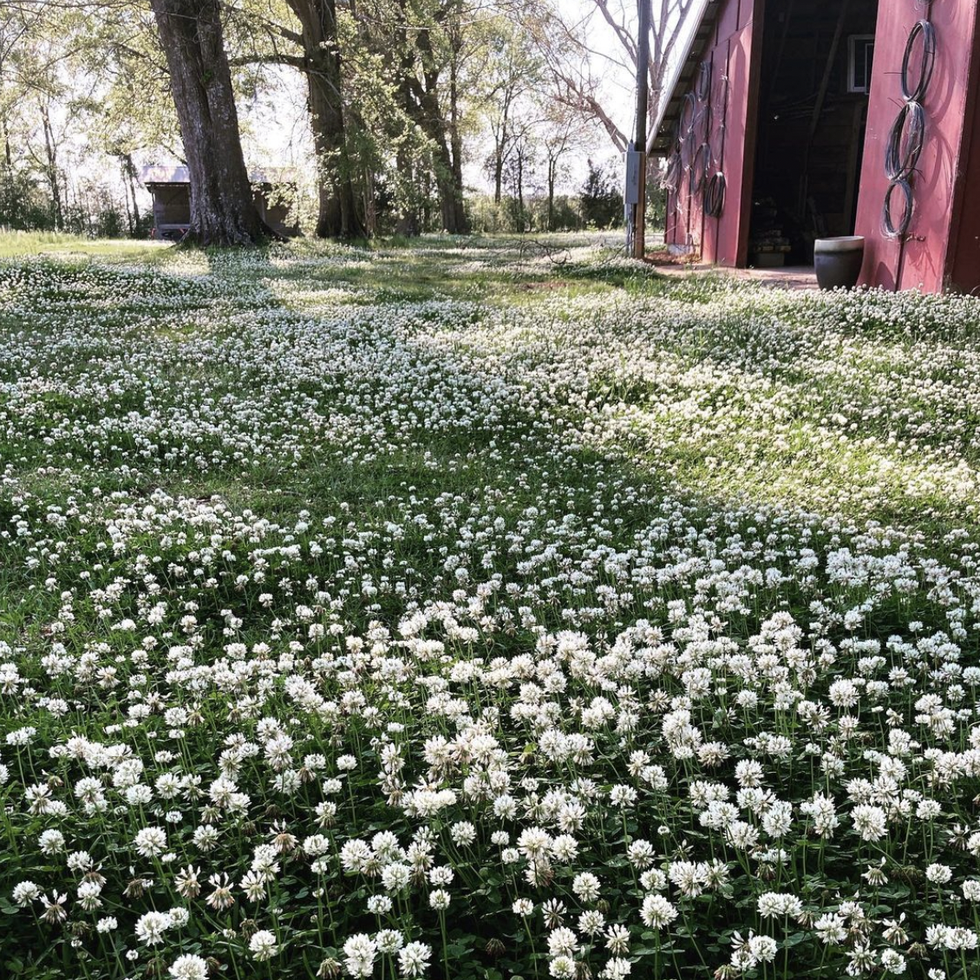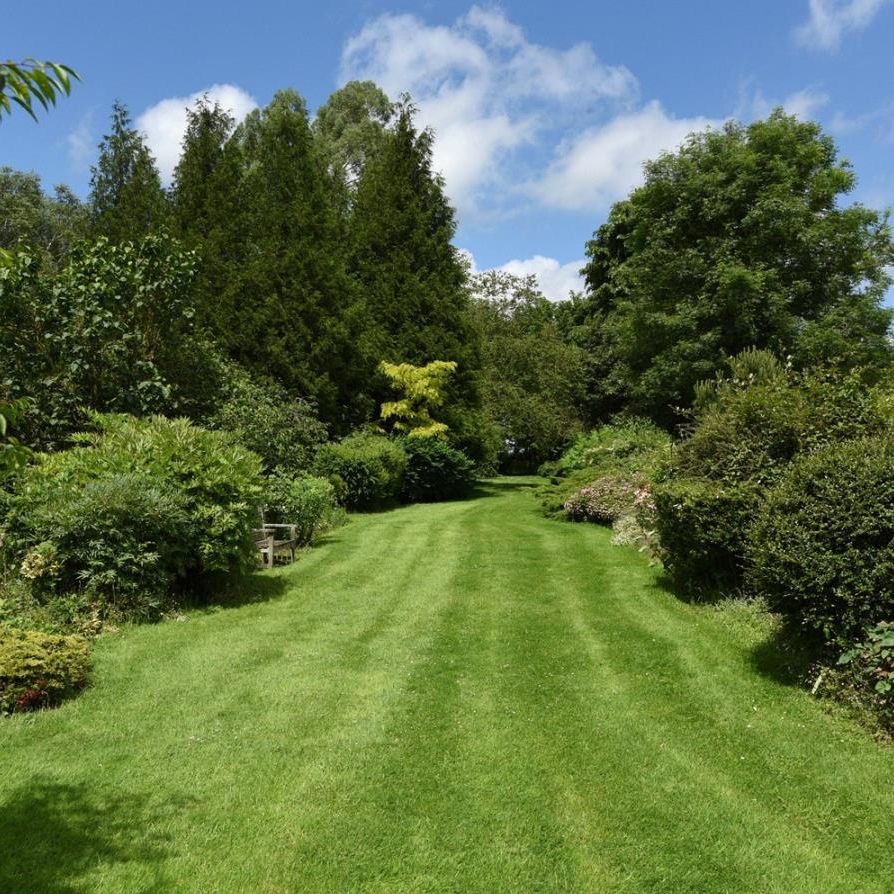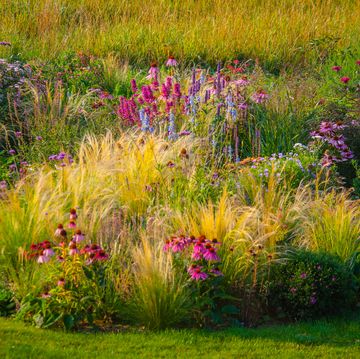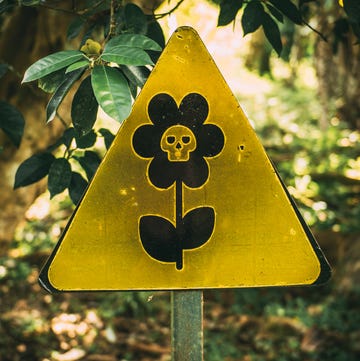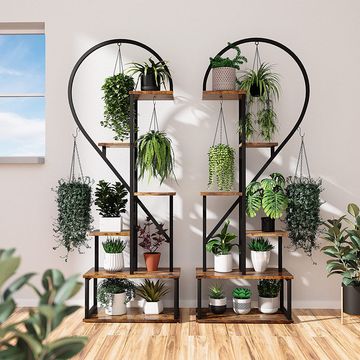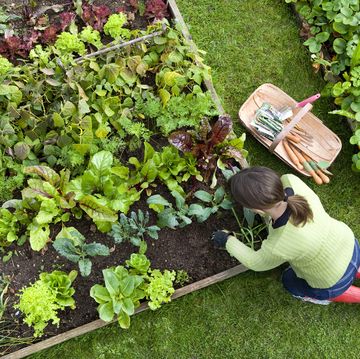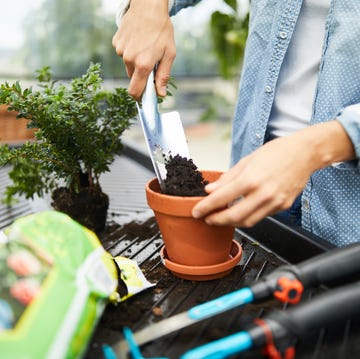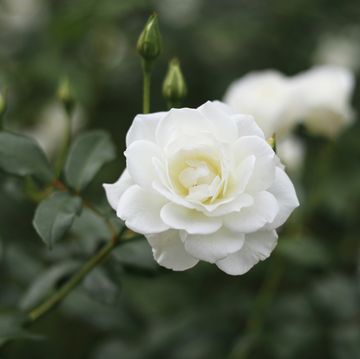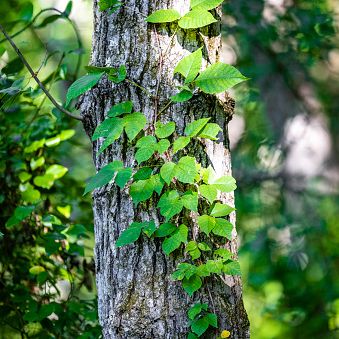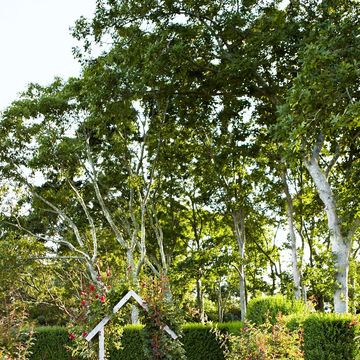Until recently, the clover plant was considered a weed that needed to be ripped up or eradicated with weed killer each spring. But over the past year, there's been a growing trend on social media—cover-covered lawns. Wondering why everyone on TikTok is obsessed with clover? We were too. So we decided to interview Allison Messner, founder of online landscape design platform Yardzen, to understand the benefits of clover lawns.
"Clover lawns require less upkeep in the way of water and mowing, don't require fertilizer, and they offer significantly more habitat value—their seasonal blooms attract important pollinators like bees and butterflies,"
Messner tells House Beautiful. Read on to learn why so many people are leaving grass behind in favor of clover.
What Is a Clover Lawn?
A clover lawn makes use of clover or a hybrid of clover and traditional grass to provide ground coverage. Clover is an eco-friendly alternative to grass because it's drought tolerant, meaning it will stay green with little to no watering. As legumes, clover plants have a symbiotic relationship with soil-dwelling bacteria. The bacteria take nitrogen from the air in the soil and feed it to the clover, keeping it green. In exchange, the plant provides carbohydrates to the bacteria. "If you want to keep an area of green lawn, but want to lessen your environmental impact, clover is a beautiful, easy-to-maintain alternative to traditional turf lawns," Yardzen's expert notes.
More From House Beautiful
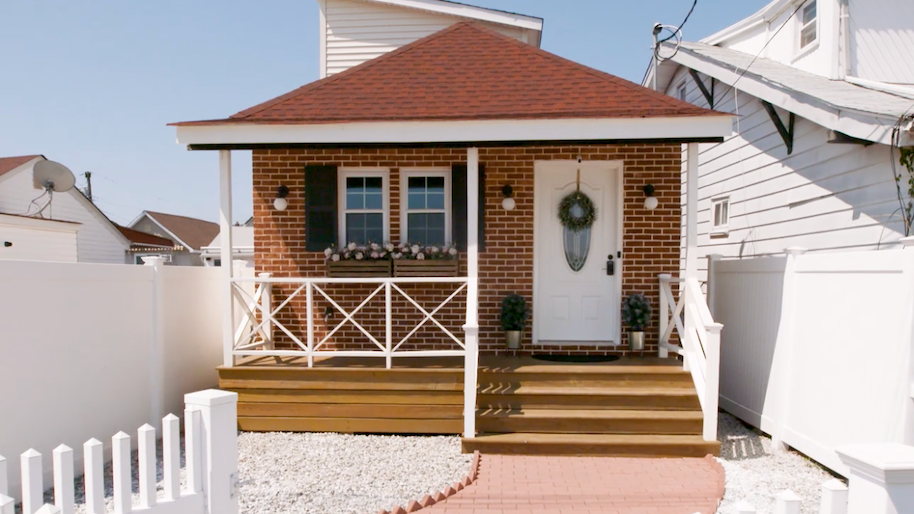
What's Wrong With a Grass Lawn?
You're probably wondering how grass got a bad rap. The truth is with climate change, maintaining grass is no longer an eco-friendly option. "Grass lawns are typically the most maintenance-intensive part of a yard's landscape, requiring regular mowing, fertilization, and heavy irrigation to look good, "Yardzen's expert shares with House Beautiful. "Add to that the fuel consumption and exhaust mowers produce, water pollution from fertilizer and pesticides, lack of habitat value, and major water consumption in an era of drought, and you've got a feature that's ripe for change."
What Are the Pros and Cons of a Clover Lawn?
I'm sure you're eager to start growing a clover lawn, but you might be wondering what the benefits and setbacks of growing a clover lawn are. Yardzen let us know, "The process for seeding is very similar to that of grass seed. Clover seed is also low-cost. Combine that with lower maintenance costs, and it's more economical than planting and maintaining grass turf." And unlike a traditional lawn, you only need to mow your clover lawn about four times a year. For anyone who has to mow a grass lawn every week, the time savings alone is reason enough to switch.
However, while clover is an eco-friendly substitute for grass, Yardzen explains it's not as durable. "Tough, low groundcovers like clover make for attractive substitutes to decorative lawns, but nothing can quite take foot traffic like a lawn," explains Yardzen. "Keep that in mind if you are substituting clover in areas designed for kids to do outdoor activities or play catch with your pooch. You can also mix clover seed with existing turf to create a surface that will withstand more traffic. If you have young kids or any allergy-prone individuals, do keep in mind that clover attracts bees. If you'd like to lessen their presence, you can mow the clover more frequently to cut back the blooms they're drawn to."
How Do I Start a Clover Lawn?
Similar to traditional grass, you'll want to start seeding in early spring. Wait until the final frost has passed and mow your lawn down to the lowest setting. Rake up debris like branches and leaves from the ground before putting down the clover seeds. You can disperse the seeds by hand or use a seed sprayer to distribute them evenly across your lawn. Apply a light layer of topsoil over the seeds for best results (but don't overdo it, or the seeds will not get enough oxygen to grow). Lastly, water your lawn as needed, and you should see clover begin to grow in a few weeks. Yardzen also notes: "It's best to check with your local nursery or garden supplier on the variety that will thrive in your local climate and geography." And clover has a short germination time, so planting in early spring is ideal.
Follow House Beautiful on Instagram.

Angela Belt is the contributing Assistant Shopping Editor at House Beautiful. She's also an interior designer and is the host of her own podcast, The Mood Board. When it comes to design, she's an esteemed expert with some of her work also appearing in HGTV, Better Homes & Gardens, The Washington Post, and more.
